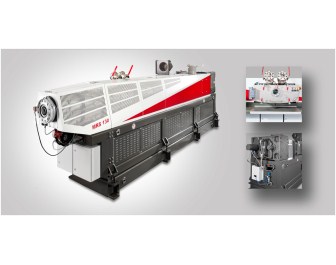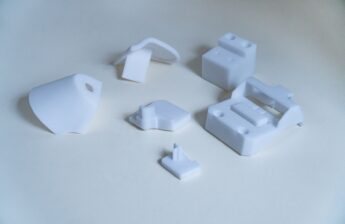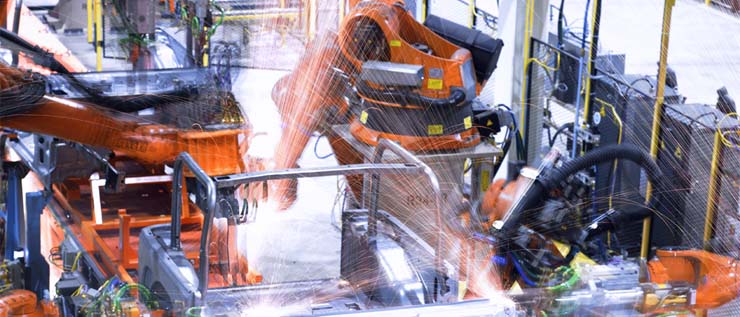 Painting on plastic product parts is needed to provide attractive appearance, resistance against mechanical, chemical
Painting on plastic product parts is needed to provide attractive appearance, resistance against mechanical, chemical
and physical stressing or special functional characteristics such as pleasant haptics and resistance to creams. And it can be done unlimitedly today, whether colorful, matte or glossy, with effects or functional characteristics. At the same time, the requirements, good quality, material efficiency, low energy consumption and flexibility are stricter than ever, making it necessary to fully exploit every opportunity for process optimization.
Increasing effectiveness in pre-treatment
The minimal levels of surface energy demonstrated by plastics are a significant challenge for painting. Residues from the manufacturing process, for example release agents, wax, additives and contamination resulting from transport and storage like dust can impair coating quality. Furthermore, the trend towards water-based paints and process-reduced coatings is placing greater demands on substrate surfaces. This makes reliable cleaning or pre-treatment of substrate surfaces absolutely imperative.
Traditionally, a power washing system with an aqueous cleaning agent and downstream, retained water dryer is used. However, this system is being replaced by CO2 snow-jet cleaning to a greater extent. This is due to savings amounting to as much as 50% in investment costs, 20% in operating costs and up to 80% in floor space requirements. On the other hand, the compact systems are easy to integrate into the painting line, can be used to automate cleaning processes and are capable of removing contamination from very small gaps. A further advantage of this dry process involves increased freedom in designing plastic parts, because there is no more need to assure that they don’t include any water retaining geometries.
The same applies to plasma processes. Two different technologies are available to this end: In the case of low-pressure plasma, treatment is carried out in closed chambers in a partial vacuum. This makes it possible to process workpieces with complicated shapes as bulk goods or individual parts, and allows for the use of a great variety of process gases. Direct and indirect corona discharge (dielectric barrier discharge) functions at ambient pressure. With the first variant, the discharge (plasma) strikes the workpiece directly.
In the case of indirect atmospheric-pressure plasma, which makes use of so-called plasma heads (nozzles), discharge takes place at the plasma head and is directed to the surface to be processed by compressed air. The surface is simultaneously cleaned and activated during plasma treatment. This dual function is able to remove organic contamination which adheres to the surface such as oil and grease and to some extent inorganic contamination as well.
At the same time, free ions and electrons react with the surface, thus forming polar groups. Consequently, surface tension is adjusted to an ideal value for the subsequent painting process. The surface becomes highly wettable as a result, which assures ideal painting conditions when water-based paints are used on metals, as well as when coating difficult-to-paint plastics, thus contributing to reduced scrap rates.
Achieving an ideal surface with fewer process steps
Filler-free painting systems are getting popular in the field of vehicle painting. The function of the filler coat is usually fulfilled by a water-based paint system. Compared with conventional painting processes, this could reduce energy consumption by 15-20% as the intermediate drying process is eliminated. Processing time is reduced accordingly as well.
In addition, the filler-free painting process reduces solvent emissions and eliminates the need for the system’s filler section. These economic and ecological advantages have triggered a trend towards a two-coat finish without primer for coating plastic parts not limited in the automotive industry and among its suppliers. Solutions which make use of only a single-coat painting process for injection molded parts are also already being used in mass production.
UV paints on the advance
Fundamentally, high quality, efficient painting of plastics necessitates a paint system which is ideally matched to the substrate, the utilized system technology and the requirements specified for the finished product. This leads to specially developed paints.
 Transfer efficiency can be increased by means of a spray pattern which is matched to the geometry of the part to be painted, as well as electrostatically supported paint guns and high-speed rotary atomizers (Image source: Wagner)
|
UV technology has made considerable gains in significance, especially where the painting of large surfaces is involved. This is due to cost optimizations made possible by very short drying times without heating and cooling processes, as well as the quality improvements made possible by this method. The levels of hardness can be attained with greatly reduced VOC emissions to boot, or even none at all.
Where larger, more complex workpieces have to be coated, UV curing in an inert gas atmosphere is opening up new possibilities. The gas atmosphere results in greater radiation intensity which makes it possible, for example, to cure parts with undercuts uniformly. Appropriate retrofitting or expansion with UV equipment, however, is required.
Painting with reduced material consumption
To combat rising raw material costs and environmental aspects, one of the approaches in painting process is the elimination of possible causes of loss such as atomizer over-spray, as well as losses due to color changeovers, during application, and in the paint supply lines. By modifying specific system characteristics, savings can often be implemented quickly. One possibility involves increasing transfer efficiency by using a spray pattern which is matched to the geometry of the part to be painted, as well as the use of electrostatically supported paint guns and high-speed rotary atomizers. Transfer efficiencies of greater than 90% are achieved with the latter.
Where hydro paints are concerned, new electrical isolation systems which are located directly on the robot arm also allow for minimized use of rinsing agents and shortened color changeover times. Beyond this, the fine atomization patterns achieved with electrostatic high-speed rotary atomizers open up the possibility of reducing air sinking speed in the booth, which results in energy savings.
The increasing degree of automation through the use of robots is also leading to reduced paint consumption. Further advantages include improved reproducibility of painting results and less scrap as well. Another positive side effect of using painting robots is the fact that it is easier to switch from fresh exhaust air systems to recirculating air for conditioning the paint booth. This can result in energy savings amounting to as much as 60% to 70%.
Intelligent paint logistics also result in reduced material consumption. For example, pipe-clearing technology makes it possible to recover unused paint from the feed lines and to dose defined quantities of paint to the application equipment for special paint coatings. This assures very frugal paint use, even when coating small manufacturing lots.
At PaintExpo 2012 which takes place at the exhibition center in Karlsruhe, Germany, from April 17-20 next year, the latest technologies and developments in the field of coating will be there for manufacturers to explore.
Doris Schulz is the founder of Schulz Presse Text, an agency specializing in individual PR solutions for technical products and services.
Source : adsalecprj.com










